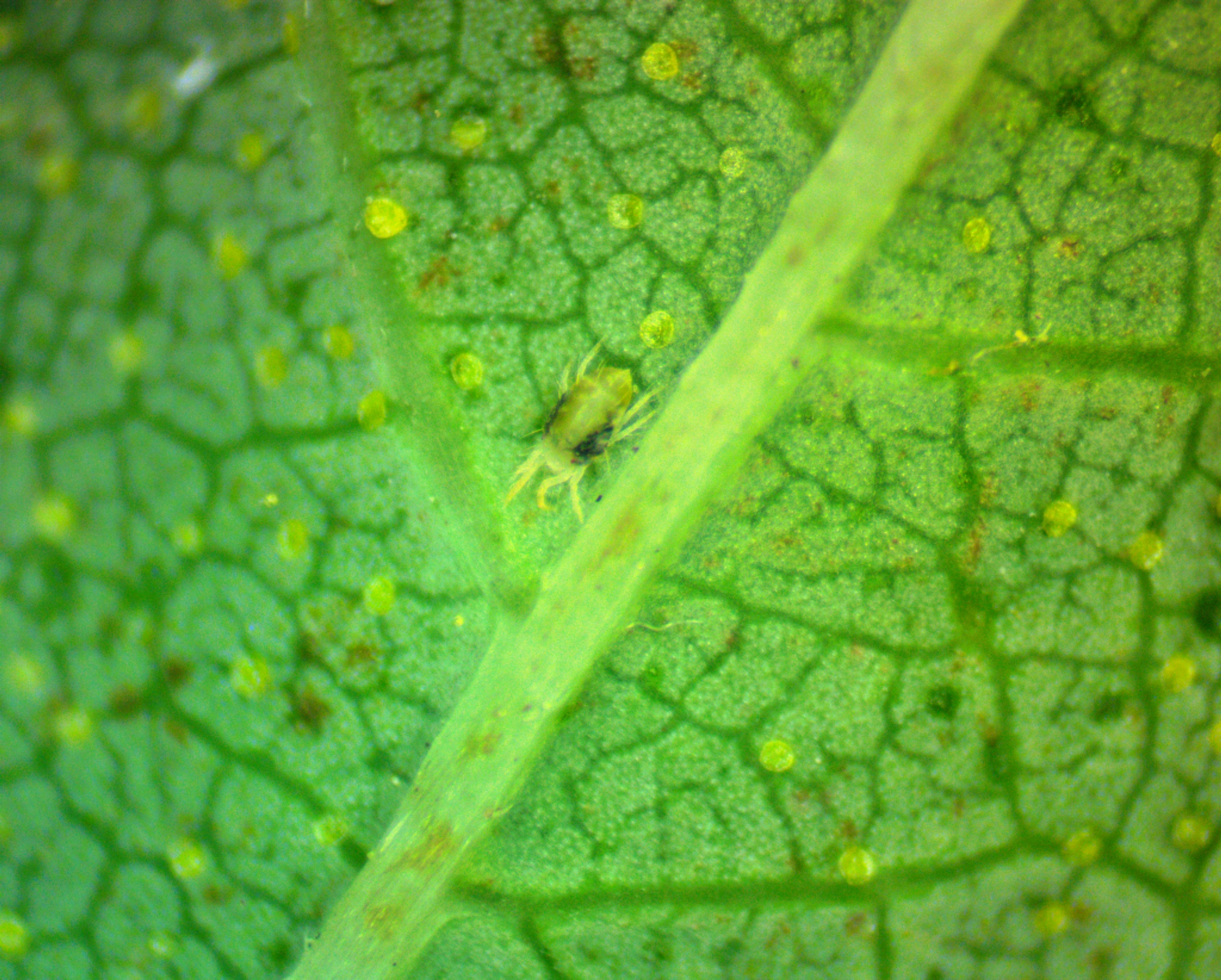Michigan hop update – June 14, 2018
Growers around the state are pushing water and nutrients to quickly-growing bines. Leafhopper numbers are building and rose chafer adults have begun emerging and feeding.

Temperatures mellowed over the past week after record-setting heat across Michigan in late May. Many growers saw symptoms of heat-related stress on bines during that period. The forecast for the coming week is predicting warmer temperatures to return, though not as extreme as what occurred in May. Growers are applying around 25 pounds of actual nitrogen per acre each week at this time and also working to keep up with water demand as bine growth rate peaks.
With market and production challenges, some growers are idling fields this season or completely halting production. Idled hopyards need to be maintained to ensure plant health in subsequent seasons and to limit risks to neighboring farms. At a minimum, idled yards need to maintain rigorous fungicide programs for downy mildew and powdery mildew, suppress mite populations and limit weeds.
You can save money on reduced nutrient programs and limited rose chafer, Japanese beetle and leafhopper management. Kill or remove plants in abandoned hopyards to limit risk to neighboring hop growers. The Michigan Legislature declared these abandoned fields a public nuisance and requires that any and all neglected or abandoned trees, vines, shrubs, plants or parts thereof that harbor pests must be removed or otherwise abated (Act 72 of 1945 286.253 Declaration as public nuisances. Sec. 3).
Hopyards will need to maintain fungicide coverage to protect them from downy mildew and powdery mildew infection. Secondary powdery and downy mildew infections are visible on affected leaves at this time. To learn more about mildew management, refer to the Michigan State University Extension article “Hop disease management for Michigan.”
Potato leafhopper numbers are growing as the initial arrivals from the southeast reproduce locally. Some hopyards are reporting high populations and substantial damage already. Like many plants, hops are sensitive to the saliva of potato leafhopper, which is injected by the insect while feeding. Damage to leaf tissue can cause reduced photosynthesis, which can impact production, quality and cause death in baby plants. To learn more about potato leafhoppers, refer to the Hop Potato Leafhopper factsheet from MSU Extension.
Twospotted spider mite activity is visible. Twospotted spider mite is a significant pest of hop in Michigan and can cause complete economic crop loss when high numbers occur. Feeding decreases the photosynthetic ability of the leaves and causes direct mechanical damage to the hop cones. Leaves take on a bronzed and white appearance and can defoliate under high pressure. Intense infestations weaken plants, reducing yield and quality.
Dry, hot weather provides ideal conditions for outbreaks. Mites are most effectively managed while still at low population levels. Scout carefully for mites season-long and treat while populations are at low levels. Refer to the Twospotted Spider Mite factsheet from MSU Extension for more information on identification and management.

Twospotted spider mite adult along hop midvein under magnification. Photo by Erin Lizotte, MSU Extension.
Rose chafer adults are beginning to emerge in southern and central counties. Rose chafers are considered a generalist pest and affect many crops, particularly those found on or near sandy soils or grassy areas conducive to grub development. The adult beetles feed heavily on foliage and blossom parts of numerous horticultural crops and can cause significant damage to hop plants, particularly young plants with limited leaf area.
Rose chafers skeletonize leaf tissue, giving them a fine, lace-like appearance. Rose chafers cause simple mechanical damage, so consider that established plants can sustain a significant amount of leaf feeding from rose chafers with no negative implications to the plant or crop. Young plants with limited leaf area may require more aggressive management. Chafer activity has typically subsided by the time burrs are present, so flower damage that could have yield implications is not an issue. For more information, refer to the Rose Chafer factsheet from MSU Extension.
Rose chafer beetles mating and feeding on hop. Photo by Erin Lizotte, MSU Extension.
Stay in touch
Want to receive more pest management information for hop this season? Sign up to receive the MSU Hop News Digest or follow MSU Hops on Facebook.
This work is supported by the Crop Protection and Pest Management Program 2017-70006-27175 from the USDA National Institute of Food and Agriculture. Any opinions, findings, conclusions or recommendations expressed in this publication are those of the author(s) and do not necessarily reflect the view of the U.S. Department of Agriculture.



 Print
Print Email
Email.JPG)